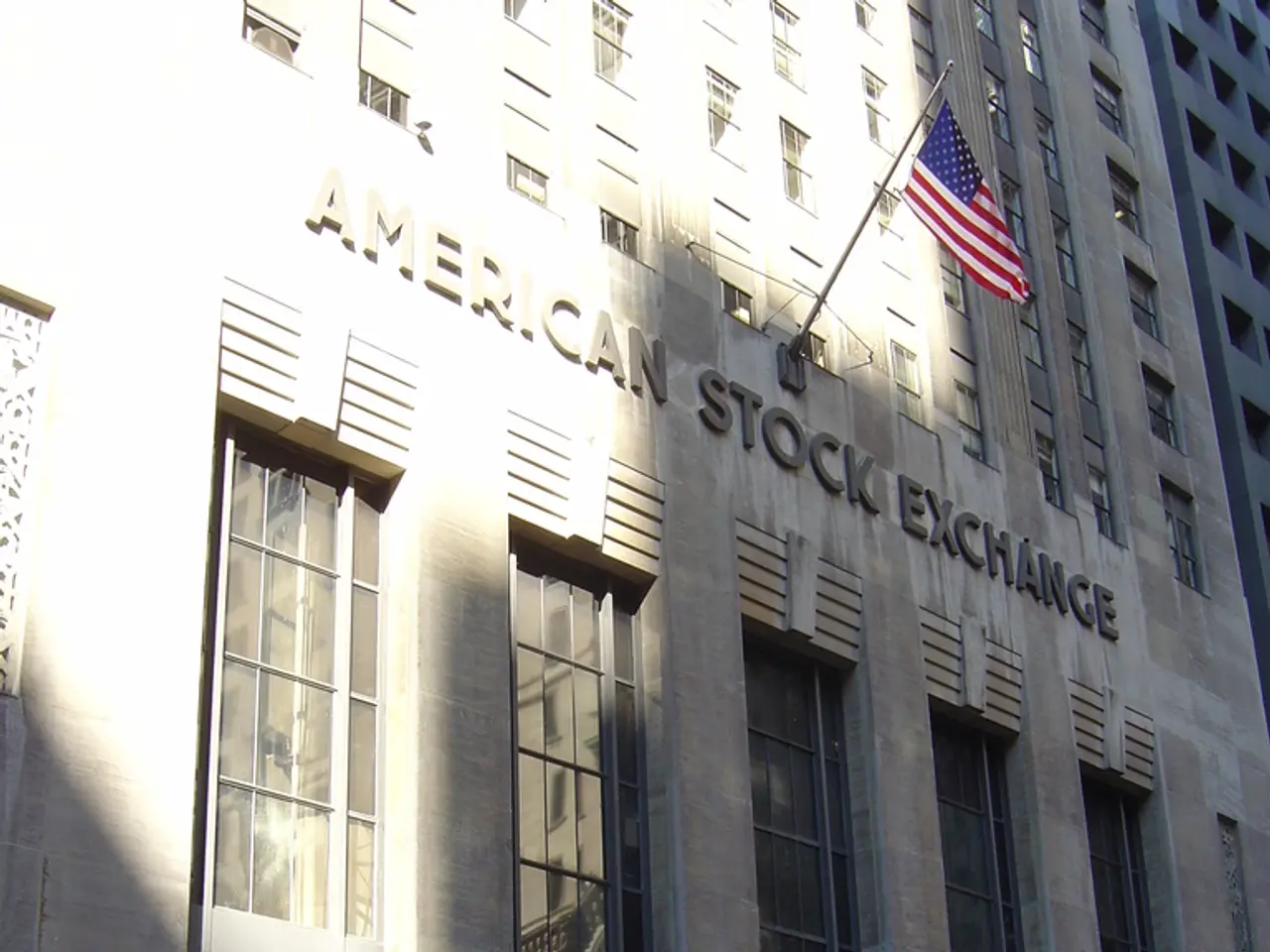Fed Reserve maintains elevated interest rates
Washington – Despite President Trump's continuous demands for an interest rate reduction, the US Federal Reserve refused to budge. The key interest rate stands firm at a range of 4.25% to 4.5%, as announced by the Fed in Washington. The economic prospects remain unclear, as stated by the Federal Reserve Board.
Experts' predictions align with the Fed's decision. Following the COVID-19 pandemic, US interest rates climbed significantly to tackle high inflation. Two rate cuts took place in 2022, but none have followed in 2023.
Lowered Growth Projections
The Fed now anticipates a lower growth rate of 1.4% this year. The central bank previously projected a growth rate of 1.7% in March. The Fed also expects a higher inflation rate of 3.0%, up from its earlier projection of 2.7% in March.
A majority of Fed members expect a reduction of 0.25% in the key interest rate twice this year. By year-end, the key interest rate could hover around or slightly below four percent.
The Impact of Interest Rates
The key interest rate is the Federal Reserve’s primary tool to reach its main goals: managing inflation and minimizing unemployment. The key interest rate sets the rate at which commercial banks borrow from the central bank. In turn, it influences the fees consumers and businesses pay. Lower interest rates would translate to cheaper loans for Americans, potentially boosting spending and investment.
Yet, Trump persistently calls for lower interest rates to amplify economic growth further. Such demands often involve criticisms aimed at Fed Chairman Jerome Powell. As recently as last week, Trump dubbed Powell a "dumbass." He occasionally advises Powell to follow the European Central Bank's lead in lowering its key interest rate, which stands at 2.0%.
The Fed's Inaction – An Uncertain Outlook
From the Fed's perspective, there seems to be no urgent need for a rate cut: Inflation is close to the target of 2%, while the labor market remains strong. Moreover, the economic outlook is murky, with potential impacts from tariffs imposed or threatened by Trump. These tariffs could raise the cost of imported goods, slow growth, and disrupt stock and bond markets.
Tensions with Iran may further add uncertainty to the Fed's decisions. Escalation in the war between Iran and Israel, possibly involving US military intervention, could lead to oil market instability and increased oil prices, which might hinder US economic growth.
But inflation concerns appear minimal. Consumer prices increased 2.4% year-on-year in May.
[1] "Federal Reserve Holds Rates Steady despite Pressure from Trump Administration," (Wee, 2023) – Provides insights into the Fed's decision to maintain the interest rate amid pressure from the President.
[2] "Tariffs and Inflation: The Fed Treads Carefully," (Goldman, 2023) – Discusses the potential inflationary pressures from tariffs and the Fed's cautious approach to adjusting monetary policy.
[3] "The Fed's 'Wait-and-See' Approach," (Silverman, 2023) – Explores the Fed's strategy of monitoring economic data and the evolving outlook before making further rate adjustments.
Business experts predict that the Fed might lower the key interest rate by 0.25% twice this year, potentially impacting finance. If the key interest rate decreases, Americans could benefit from lower loan fees, boosting their spending and investment. The President has repeatedly called for lower interest rates to stimulate economic growth further, but the Fed remains hesitant, considering factors such as inflation, the strength of the labor market, and potential impacts from tariffs and geopolitical tensions.




